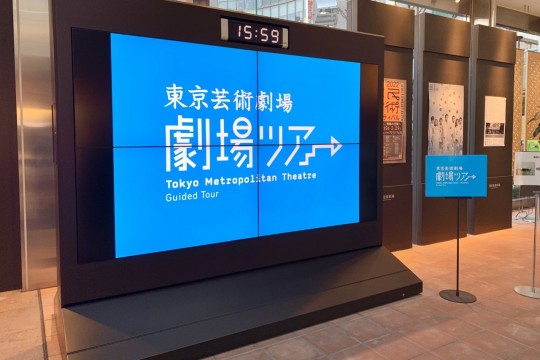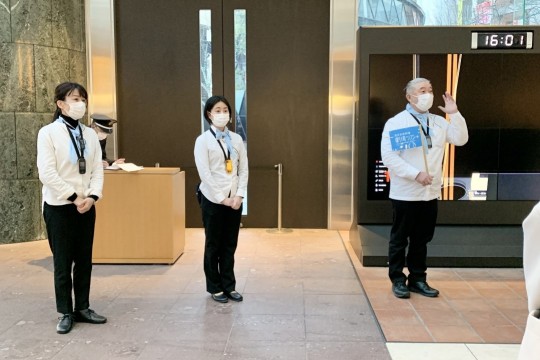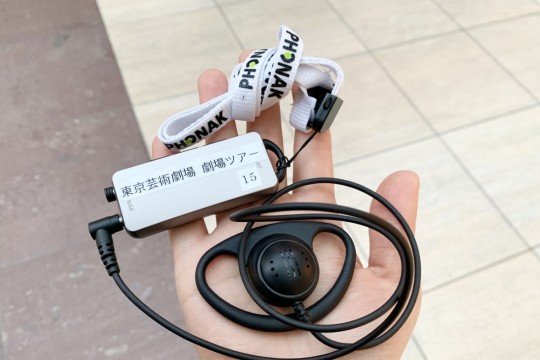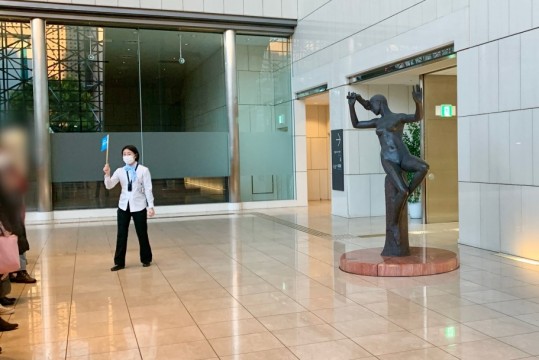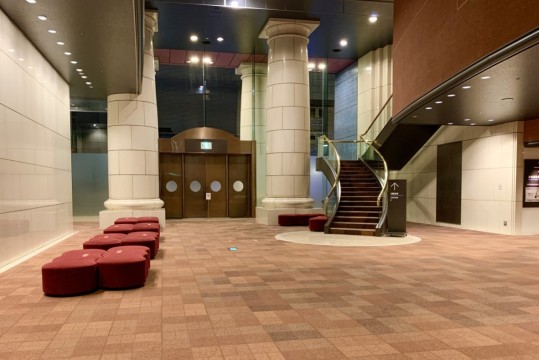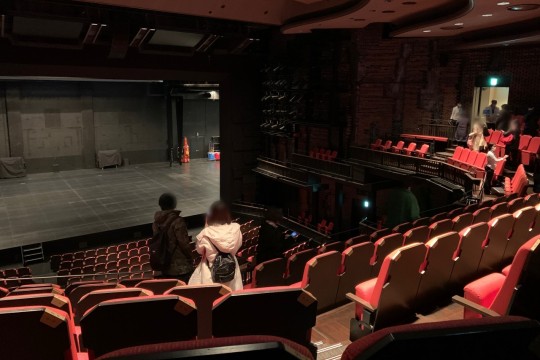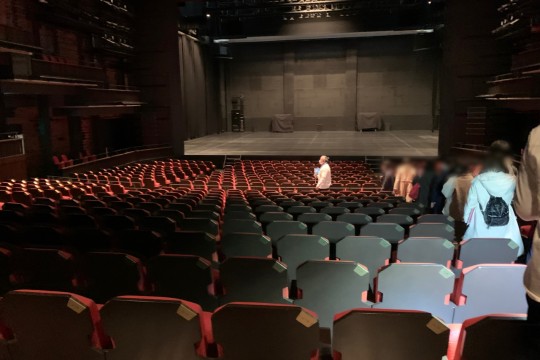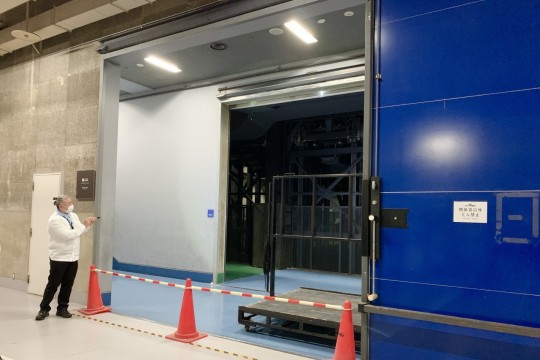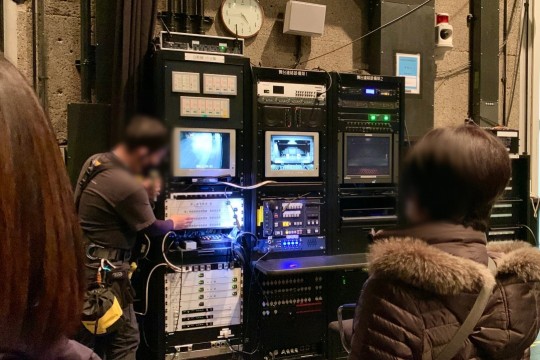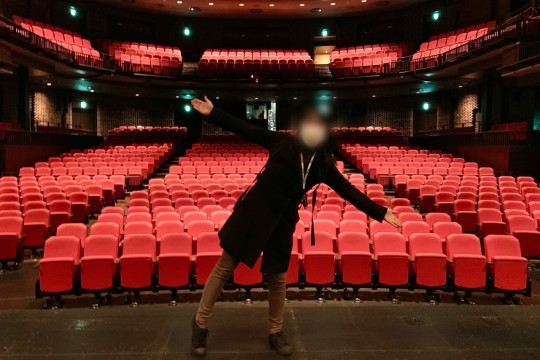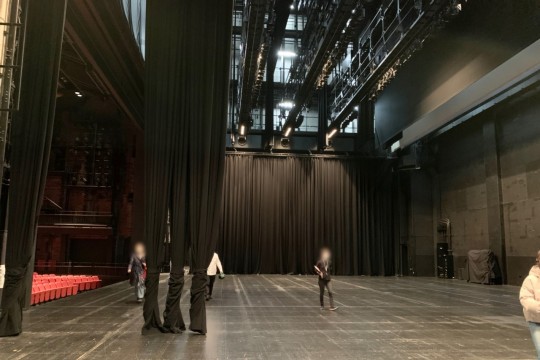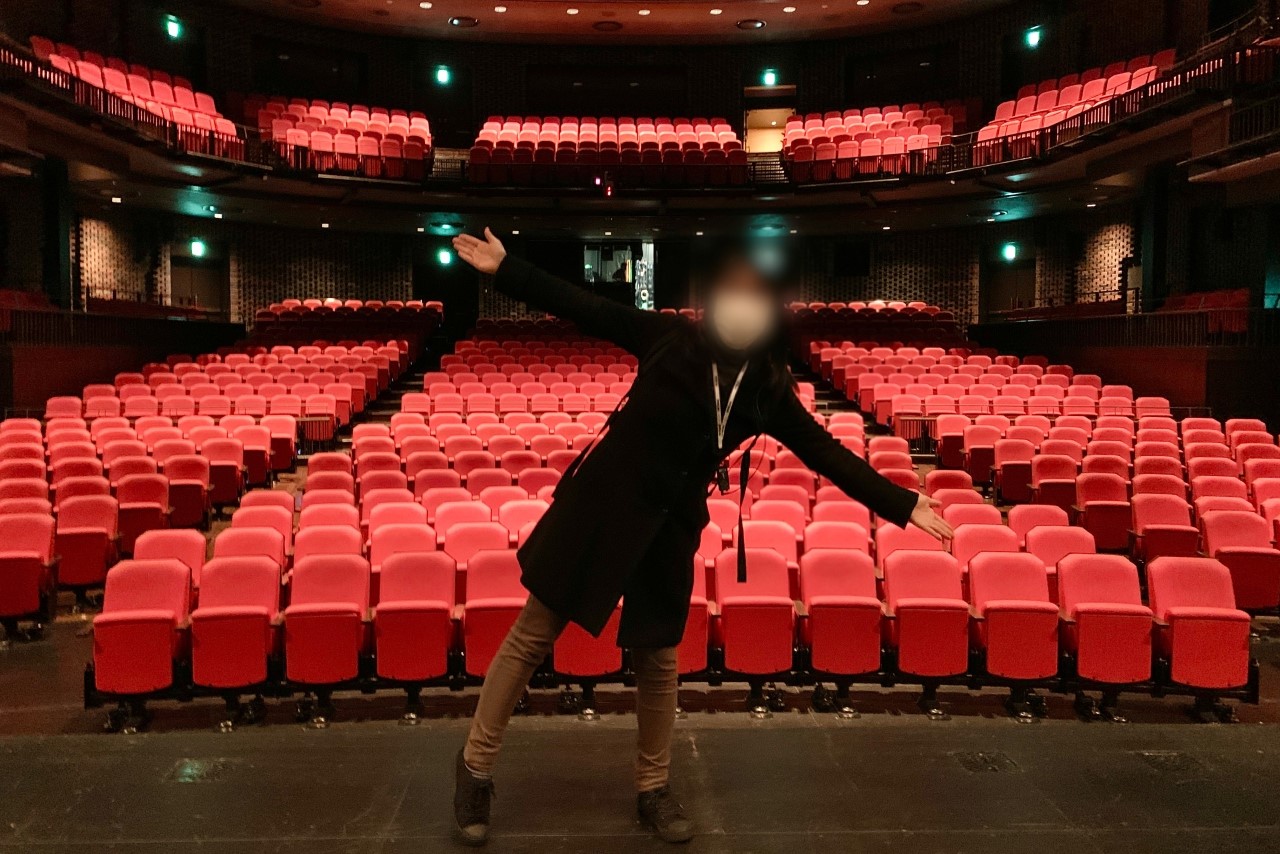
Every month at the Tokyo Metropolitan Theater in Ikebukuro, Tokyo , a tour event "Theater Tour" is held in which a tour guide introduces the features and equipment of theater architecture, works of art, and how to enjoy public spaces .
This time, I participated in a "theater tour" around the playhouse (middle hall) out of the four halls in the Tokyo Metropolitan Theater. Even ordinary people may stand on the same stage as the actors who push for one coin (500 yen)! I will report on the pattern of this event.
Plenty of 60 minutes with a small number of people! "Theater tour" is such an event
The Tokyo Metropolitan Theater, a complex arts and culture facility built by the Tokyo Metropolitan Government in 1990, designed by architect Yoshinobu Ashihara. It was reopened in 2012 after major renovation work.
A concert hall (large hall) famous for having one of the largest rotary pipe organs in the world, a playhouse (medium hall) for theater and dance performances, and a creative transmission theater with two small halls throughout the year. We send out cutting-edge performing arts.
In addition to the performances in the hall, the theater also has artistic activities such as exhibitions and workshops in studios and galleries, and the "theater tour" that I participated in this time is one of them. Starting in 2019, it is being held 3 to 5 times a month.
"Theater tour" is a tour event where a guide with specialized knowledge will guide you to the highlights of the theater. Beginning with the history of the Tokyo Metropolitan Theater, which will celebrate its 32nd anniversary in 2022, the theater's surprisingly unknown theater features four highly specialized halls, the architectural features of the gallery, the stage mechanism, and the various works of art in the hall. It introduces the charm with episodes that only the theater staff knows.
The content of the tour is not one. Looking at the history of past events , there are various tours such as tours that look at one hall such as a concert hall and playhouse from various angles, and tours that focus on rooftops and works of art that are not open to the public. Since the route and the content of the commentary change depending on the usage of the facility at that time, there are many repeaters.
It is held regardless of the day of the week or the time of day, basically
・ One tour costs 500 yen for 60 minutes (sometimes there is a special tour of 1,000 yen for 90 minutes)
・ The number of applicants is about 15 to 20 each time.
It seems that it is. Due to the small number of people and the irregular timing of recruitment start, it may be said that the event is a little difficult to participate in, as it is often full when you notice it.
Speaking of the stage, I'm a professional writer who sees it completely, and I don't think I'll ever have the opportunity to go to the stage of a big theater like the Tokyo Metropolitan Theater, but I was curious about how I felt when I went to the stage. At that time, when I learned about the existence of the "theater tour" and investigated it, I found information that there was a tour route that could go up to the stage! Luckily there was a vacancy on the playhouse tour, so I decided to take the plunge.
This tour route may not always be available, but please take a look for reference.
"Theater Tour" Playhouse Edition Starts! I'm glad that you can put it in an off-limits space
I participated in the event starting at 16:00 on December 27, 2021 (Monday). On the day of the event, a reception desk dedicated to the tour was set up next to the box office (reception desk) on the 1st floor.
For 20 participants, 3 guides came on this day. I was grateful that I was paying close attention to each of the participants, and if I had any problems, I was immediately called out.
Equipped with a terminal that can listen to the guide's voice wirelessly during the tour. It was convenient because I could hear the explanation firmly even in a remote place.

A large atrium that is characteristic of the Tokyo Metropolitan Theater. The box office can be seen in the lower right.
Before visiting the playhouse, the first stop was the break space above the box office. It is an area that is normally off limits to prevent vibrations from echoing inside the box office, but it is said that it is specially open for tour participants .
This tour creates a "special feeling that only the participants can enjoy" many times, so it feels very good. I understand that there are many repeaters!
Here, I would like to hear a commentary on the history and architecture of the Tokyo Metropolitan Theater. There is no difficult story to explain, and you can get a lot of trivia information that you want to show to someone.
For example, this large theater with 11 floors above ground and 4 floors below ground has a large open atrium on the north side and four halls on the south side, but this contrasting structure is worldwide. It's very rare to see.
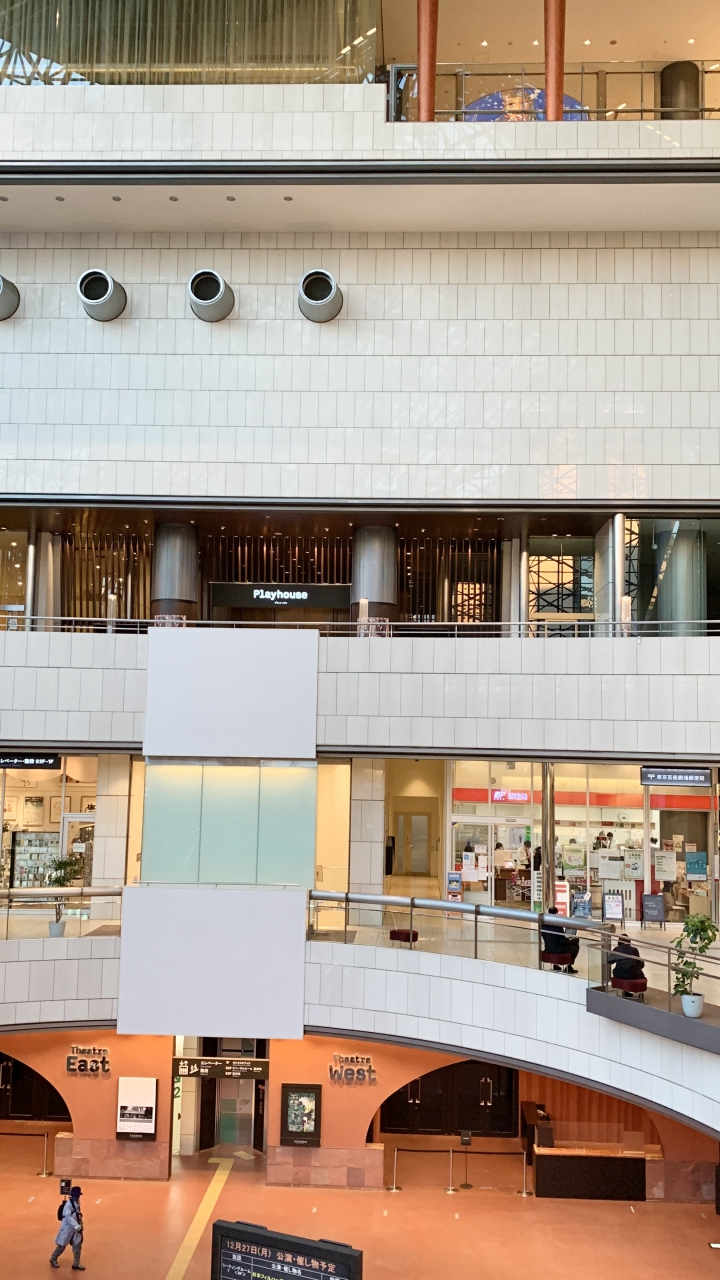
A vertical structure where you can see the entrances of the concert hall on the 5th floor, the playhouse on the 2nd floor, and the 2 small halls on the 1st basement floor.
Why did you crowd the halls on the south side even though there was space on the north side? Why is the largest concert hall on the upper floors?
The reason is that the Tokyo Metro Yurakucho Line runs underground on the north side . In consideration of noise and vibration, all the halls were gathered on the south side, and the concert hall, which requires the most silence, was built on the upper floors.
The author, who was not wondering about this structure, was impressed by the fact that he made a huge atrium just to give the building its own characteristics. Before joining, I was only interested in going on stage, but at this stage I'm already enjoying it a lot.
The Tokyo Metropolitan Theater is said to devote 1% of its total budget to art through the "1% for Art" movement proposed by architect Yoshinobu Ashihara. The tour also touched on the charm of a number of public arts designed to harmonize with the theater, rather than just putting them there.
We are finally approaching the playhouse. The lobby of the playhouse is used for press conferences to announce the production before the opening, and for the performers to warm up.
There is also a scene where the guide poses on the stairs of the gold railing, saying, "Actors sometimes take pictures for magazines like this." Lots of humor.
Enter the playhouse! I also disturbed the carry-in entrance and stage sleeves
It's finally time to enter the main playhouse of the tour. The hall that was used as the scene is fresh. Of course, it was reserved, so I could take as many photos as I wanted.
A playhouse with 631 seats on the first floor and 203 seats on the second floor, for a total of 834 seats. The horseshoe-shaped hall, which has an orchestra pit and is reminiscent of an opera house, was originally designed for the performance of music programs such as opera and ballet. However, at the time of the renewal in 2012, the idea of artistic director Hideki Noda was reborn as a form suitable for transmitting theater programs such as contemporary theater and musicals under the concept of "surrounding the stage with people". matter.
Here, he mainly explained in detail the sound and lighting improved by the renewal, and the ingenuity of the audience seats, which has a reputation for "easy to see the stage at any position". In fact, I didn't feel any stress in any seat when watching at the playhouse, so this story was very interesting to hear.
From the lower side of the playhouse, I went down to the basement and headed for the carry-in entrance. This is the place to bring in all the hall galleries where trucks enter.
The playhouse has an auction mechanism on the stage, and by raising and lowering the auction, luggage can be transported directly from the carry-in entrance to the stage. It's convenient! In the back of the photo is the skeleton of the playhouse.
Returning to the playhouse again, this time to the lower sleeves of the stage. I thought that it was cluttered with wiring and equipment, but it was a surprisingly clean space when there was no performance.
Here, the technical staff will talk about the equipment for stage communication. During the performance, the stage director plays a central role in checking the stage and audience seats on a night-vision monitor like the one in the photo above, and giving instructions to the sound and lighting staff while watching the situation. I'm really happy to hear the test broadcast for instructions.
As with the carry-in entrance, the surprise of "Can you show me this far !?" seems to be the recommended point of the "theater tour".
Please wait! On stage at the playhouse
The playhouse "theater tour" has made me so sick, but I'm finally on the stage I've been waiting for!
Actually, I knew that I could enter the hall at the application stage, but I didn't mention whether I could go on stage, so I instinctively made a guts pose.
The tour participants, including the author, went to the commemorative photo time with excitement in silence. I participated alone, but the guide was happy to take pictures.
Of course, there are no people in the audience seats, but if you have visited the playhouse to see the performances of your favorite actors, you should be deeply moved by saying, "I was looking at this kind of scenery." Isn't it a push activity that you can't easily experience?
When I calmly observed the stage, I was surprised that it was actually much deeper than I felt in the audience. When asked, the frontage (width) is about 14m and the depth is about 17m, so the depth is longer.
It was said that the depth of the audience seats was about 25m, which means that the stage is 2/5 of the depth of the entire hall. It was so big! You would never have noticed if you didn't take the tour.
The ceiling of the stage, which cannot be seen from the audience seats, was much higher than I had imagined, and I was stunned. The photo shows a mechanism called four light bridges for hanging stage lighting equipment, but it seems to move up and down electrically. The fine adjustment of lighting equipment is done by getting into the light bridge and making adjustments in the sky, so just imagining it will make you feel free, and at the same time, the efforts of the technical staff will make you sick.
In addition, there are various stage sets that can meet the various needs of users, such as a mechanism called a "bon" (revolving stage) that normally hides in the sleeves and slides on the stage when used. , He explained the actual usage episode with a funny mix.
This is the end of the tour. I participated for the stage, but I was very satisfied because my curiosity was stimulated many times more than I imagined.
By learning about the structure and ingenuity of the hall and the efforts and thoughts of the people involved in the stage, I feel that the enjoyment of future viewing will expand. When I hear that it's a performance at the Tokyo Metropolitan Theater, I want to be a little more favored than other theaters. I felt that it was a fascinating tour that made me feel that way. This is too much for one coin!
There is no fixed timing for recruitment, but when I asked the guide, it was the quickest to check the official website of the Tokyo Metropolitan Theater frequently to know the start of recruitment. Besides, it seems that information is posted on Twitter and Facebook, so if you are interested, please follow it.
Note * The tour route introduced this time is just an example. Please note that the tour route is determined by the usage of each facility, so depending on the time, you may not be able to go on stage or enter the hall.
■ Outline of Tokyo Metropolitan Theater "Theater Tour"
| venue | Various parts of Tokyo Metropolitan Theater |
| schedule | Held irregularly every month |
| Time required | Approximately 60 minutes * Some tours may take approximately 90 minutes |
| Entry fee | 500 yen including tax * 1,000 yen including tax may be available for some tours |
| Capacity | About 15 to 20 people each time * First-come-first-served basis * Same-day tickets available only if the capacity is not reached |
| How to apply | Pre-registration from the Tokyo Metropolitan Theater website * Settlement on the day of the fee |
| Official page | https://www.geigeki.jp/performance/guided-tour2021/ |
| https://twitter.com/geigeki_info | |
| https://ja-jp.facebook.com/geigeki/ |
* The content of this article is as of the date of publication (2022/1/12).
<Past related articles>
[Tokyo Metropolitan Theater] German, Belgian and Japanese art and literary arts gather in Ikebukuro! An exhibition to think about future international exchange will be held


